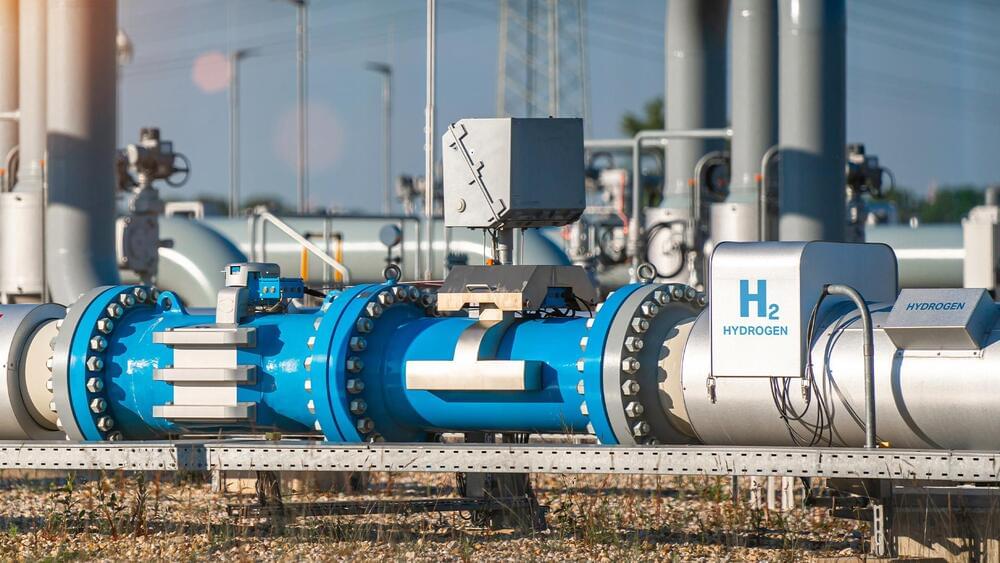A 2022 pilot proved to officials at Dominion Energy that Spot can help improve efficiency and boost worker safety.



The method requires only visible light and no external heating.
Hydrogen sulfide, infamous for its aroma of rotten eggs, is known to be highly poisonous and corrosive — especially in wastewater applications. Petrochemical plants and other industries make thousands of tons of this gas every year as a byproduct of various processes that separate sulfur from petroleum, natural gas, coal, and other products.
Now, Rice University engineers and scientists have devised a new way for such petrochemical industries to turn the noxious gas into “high-demand” hydrogen gas.
Audioundwerbung/iStock.
Rice engineer, physicist, and chemist Naomi Halas and the team have created a method that derives energy from light and employs gold nanoparticles to convert hydrogen sulfide and sulfur in one step.


Punjab entrepreneur Simarpreet’s startup Hartek Solar is helping people adopt clean energy solutions more easily with customisable ‘plug-and-play’ solar kits. Watch this video to see how.
Sounds Interesting? Share it now!
FOR as long as internal combustion has ruled the roads, vehicles have been fitted with just three basic types of engine: four-stroke, two-stroke, and rotary.
Each differs from the next with regard to its power density and fuel economy, but the general premise of each is very similar. Air and fuel go in, get ignited, and push the piston (or rotor) which in turn rotates the crankshaft creating motion.
It’s a simple enough process, and through well over 100 years of fettling and refining, petrol engines have become ever more potent, economical, and advanced.

Nature is ever-changing. Season after season, it grows and reshapes, constantly offering new things to see, explore, and connect with. In its perpetual state of evolution, nature serves as an endless source of inspiration for anyone looking to further their craft.
In the five-part content series Tasting Wild, acclaimed chef Melissa King (winner of Top Chef: Los Angeles All-Stars Season 17) teams up with National Geographic photographers and experts to experience nature’s creative power firsthand. Traveling to some of the most remote and unspoiled areas in the United States by way of the first-ever MAZDA CX-50, King pushes her boundaries to find inspiration, connect with the land, and fuel her creativity.

While we may struggle with the production of electricity and green power now, a recent discovery by the University of Massachusetts in Amherst has discovered something quite amazing. One day, in the not far away future-we may have the ability to create electricity from thin air.
Well, technically we already do, but let me explain how this happened and what that means for us. The study was published in the journal Nature in February 2020. The title is “Power generation from ambient humidity using protein nanowires” and through this study, the researchers stumbled upon something quite amazing.
The project was started by electrical engineering student Xiaomeng Liu, who works in the lab with the study author Jun Yao, discovered a prototype that he had been working on and began doing something he didn’t expect. Even when he wasn’t running the machine, he was picking up on power output. “We were initially very perplexed,” Yao says.

E-scooters are all the rage in Türkiye, as their sales and number of companies renting them soared in recent years. Yet, they have several cons, like long charging times and possible pollution from the uncontrolled disposal of discarded batteries. Four Turkish engineers hope a new scooter, working on hydrogen power, may overcome these problems.
“Hebunk,” devised by entrepreneurs working at a technology park at Istanbul Technical University, boasts a fast charging time, just five minutes, and can travel for 60 kilometers (37.28 miles) with a single charge, which roughly costs about 9 cents (TL 1.8).
The scooter, which is not too different from e-scooters in appearance, was developed in one year by the entrepreneurs’ HydroBorPEM Fuel Cell Technologies, now based at a technology park in Istanbul’s Yıldız Technical University.

Ice buildup on powerlines and electric towers brought the northern US and southern Canada to a standstill during the Great Ice Storm of 1998, leaving many in the cold and dark for days and even weeks. Whether it is on wind turbines, electric towers, drones, or airplane wings, dealing with ice buildup typically depends on techniques that are time consuming, costly and/or use a lot of energy, along with various chemicals. But, by looking to nature, McGill researchers believe that they have found a promising new way of dealing with the problem. Their inspiration came from the wings of Gentoo penguins who swim in the ice-cold waters of the south polar region, with pelts that remain ice-free even when the outer surface temperature is well below freezing.
We initially explored the qualities of the lotus leaf, which is very good at shedding water but proved less effective at shedding ice,” said Anne Kietzig, who has been looking for a solution for close to a decade. She is an associate professor in Chemical Engineering at McGill and the director of the Biomimetic Surface Engineering Laboratory. “It was only when we started investigating the qualities of penguin feathers that we discovered a material found in nature that was able to shed both water and ice.”